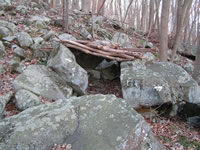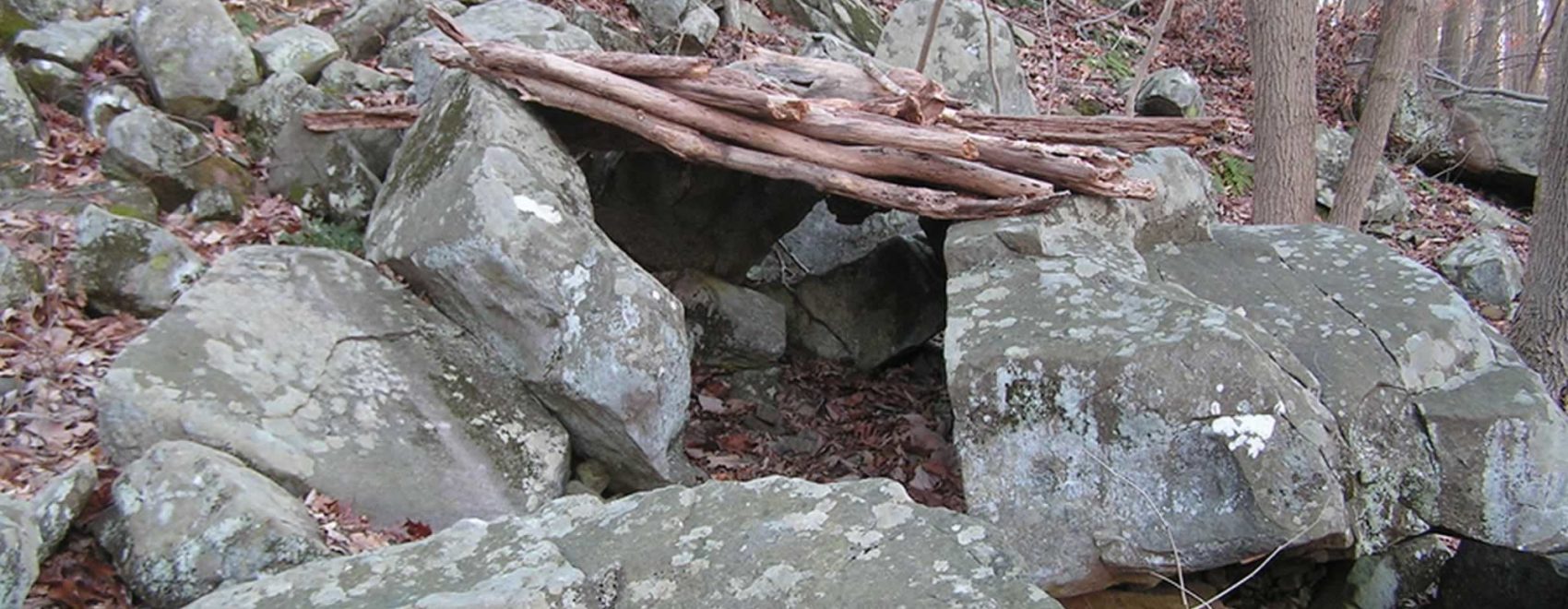Why is Survival Shelter Important?
As humans, shelter is one of the things that we absolutely need. In the desert, shelter protects us from the sun. In colder climates, shelter provides protection from the wind and cold.

When we think about shelter in terms of survival, however, all bets are off. Even if you have a bug out location, there is a very real possibility that it will be inaccessible for days or weeks following a catastrophic event.
This article is about real survival. It has nothing to do with what’s in your bug out bag (BOB) or how many bullets are in your gun, it has to do with using what you have available to create what you need.
Selecting a Good Location for Survival Shelter
Your first priority should be finding a suitable location to construct your survival shelter.
The location you choose should contain materials for building a shelter, provide a tactical advantage, and be located far away from potential hazards (including other people). Let’s take a look at each of these three requirements in more detail.
Survival Shelter Building Materials
The materials you use to build temporary survival shelter vary depending on your location. The most common building materials are leaves, branches, and trees.
In fact, you can build a shelter from just these items although having some rope is always a plus. You can usually make sturdy rope from vines and roots if you don’t have any paracord with you.
Natural Survival Shelters

In lieu of natural construction materials, look for natural survival shelters. A natural shelter could be as simple as a small cave or hollowed out tree.
Natural shelters are always a good choice because they provide natural camouflage, save calories (no construction needed), and are pretty much “ready to go.”
Of course, make sure your natural shelter is not already inhabited by wildlife as this could quickly become a fatal encounter.
Tactical Considerations for Building Survival Shelter

The location you choose should provide concealment from potential threats. This could come in the form of other people, animals, zombies, or anything else you can imagine.
Zombie apocalypse aside for a moment, there is a very real possibility that other frantic humans could locate your shelter and attempt an assault on you, your family, and your supplies.
Suffice it to say that it is in your best interest to keep your survival shelter location discrete whenever possible.
There should also be escape routes. In the event of an attack, you definitely do not want to find yourself backed into a corner. Make sure the location you select has multiple entry and exit points for a quick retreat if necessary.
Areas to Avoid When Building Survival Shelters

There are a few other things you should consider when selecting a survival shelter location.
Avoid sites that are prone to flooding, especially in colder climates. You can quickly succumb to hypothermia if you wake up in a puddle of water. Although locations near mountains usually provide protection from the elements, don’t forget about the possibility of rock slides and/or avalanches.
Try to locate your shelter in an area that is not directly in the path of heavy objects above you.
Avoid Low Ground and Flood Prone Areas
Try to avoid low ground whenever possible. Not only is low-lying ground more susceptible to flooding and rock slide damage, but cool air tends to collect in these low-lying areas in the evening. Remember that even desert climates can get below freezing at night, so stay away from these pockets of cold air whenever possible.
Finally, stay away from freshwater sources whenever possible. This is only a temporary survival shelter so a constant supply of water is not a necessity.
Other people and animals may be attracted to this water source and it is in your best interest to stay clear of them and not give away your position for the convenience of drinking water. You can always collect water and bring it back to your shelter location or find another, less obvious water source.
Evaluate Your Survival Shelter Building Tools

In addition to selecting a proper location, there are a few other things you should keep in mind. Take an inventory of the tools you have on hand (if any).
Can any of the tools you have be used to help create a temporary shelter? If not, can these tools be used to make other tools that can be used in the construction process?
For example, since leaves may become a primary source of insulation for your temporary survival shelter, can you make a rake out of raw materials and tools you have? A rake will save you lots of time and energy collecting a large pile of leaves for your shelter.
If you do not have any tools available, you should be looking for natural shelters or areas with lots of trees where you can fabricate a simple shelter without any special tools. These wooded areas also provide ample fuel for fires; yet another benefit.
Simple Shelter Construction
If natural shelters are not available, you will be forced to create a simple shelter. Fortunately, this is easy to do and a makeshift temporary shelter can be constructed in numerous ways.

Assuming you have no supplies, the two easiest shelters to construct are the debris hut and the tree pit.
A debris hut is constructed by making a long ridge pole out of a sturdy fallen branch and supporting one end of it on top of a sturdy base. You can use a large rock or tree stump as a base.
Smaller branches can be propped against this ridge pole on both sides and covered with leaves, twigs, mud, and other debris to form an insulated barrier from the weather. It is crude, but it does work well and can keep you warm in a pinch.
A tree pit works well in the snow. The low hanging branches of a tree provide overhead cover and you can dig out the snow around the tree trunk. Place evergreen boughs on the bottom of the pit for insulation and a soft place to lie. You can also put additional evergreen boughs on top of the hole for additional cover.
Similar techniques can be used to create shelters in just about any location. If you do have some tools, you have a lot more options. Even just having a length of rope in your bug out bag means you can create shelters quickly.
Although there are many variations of this design, a simple A-frame tent can be created by stretching your rope across two trees and using the rope as a ridge pole. Smaller branches, twigs, and debris can be leaned against this rope to create a lean-to style shelter. If you have a tarp, you can use this as a shelter from wind and rain.
Learn Survival Shelter Building Techniques Ahead of Time
Survival is not easy. This article assumes that there are materials available that are usable when in fact, you may have no such materials available.
The goal is to get you thinking about various ways to manipulate your surroundings to create temporary shelter. No matter where you find yourself, there is bound to be a way to create at least partial protection from the elements.
Combined with a fire, you should have no problem surviving until you can reach your bug out location or create a more permanent shelter solution.
Continue Tutorial Below

Read More

Read More

Read More

Read More

Read More

